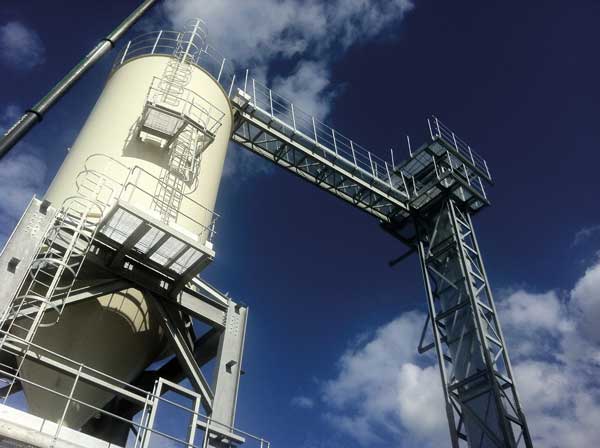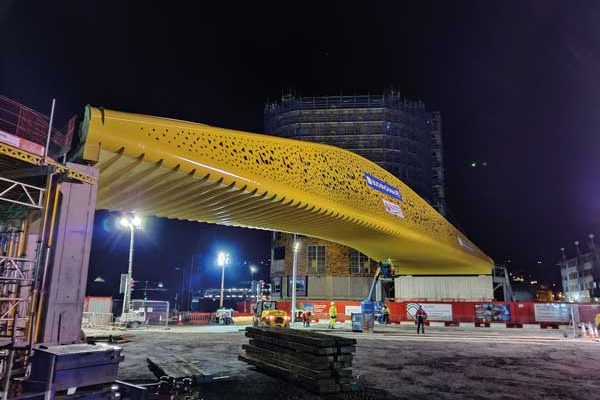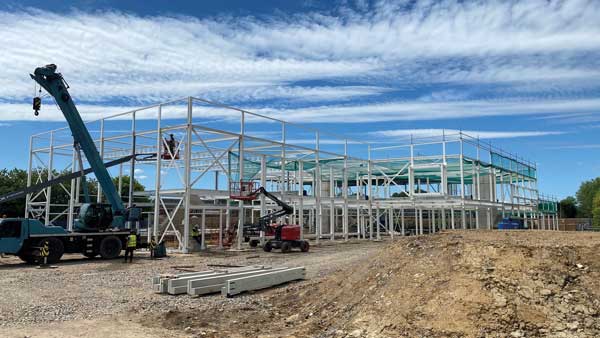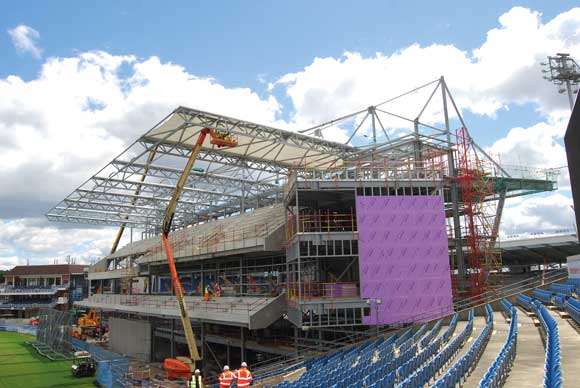Projects and Features
An introduction to surface preparation for corrosion protection

Galvanized steelwork is used in numerous industrial applications such as supporting silos, as pictured
Cost-effective corrosion protection of structural steelwork can be achieved through the appropriate application of paint and metallic coatings and should present little difficulty for common applications and environments if the factors that affect durability are recognised at the outset.
In this article NSC looks at surface preparation which is the essential first stage treatment of a steel substrate before the application of any coating, and is generally accepted as being the most important factor affecting the total success of a corrosion protection system.
Why surface preparation is essential to ensure effective corrosion protection?
The performance of a coating is significantly influenced by its ability to adhere properly to the substrate material. The initial surface condition of steel can vary in terms of the amount of residual millscale and degree of initial rusting. However, generally it is an unsatisfactory base upon which to apply modern, high performance protective coatings.
Preliminary treatments
Residues of oil, grease, marking inks, cutting oils etc. after fabrication operations will seriously affect the adhesion of applied coatings and must be removed. It is erroneous to think that subsequent cleaning operations will remove such contaminants and it is bad practice to permit them to remain on the surface. Failure to remove these contaminants before blast cleaning results in them being distributed over the steel surface and contaminating the abrasive. Suitable organic solvents, emulsion degreasing agents or equivalents should be applied to remove contaminants in preparation for subsequent descaling treatments.
Blast cleaning
A range of methods of preparation and grades of cleanliness exist, but by far the most significant and important method used for the thorough cleaning of millscaled and rusted surfaces is abrasive blast cleaning.
The standard grades of cleanliness for abrasive blast cleaning in accordance with ISO 8501-1 are:
- Sa 1 – Light blast cleaning
- Sa 2 – Thorough blast cleaning
- Sa 2½ – Very thorough blast cleaning
- Sa 3 – Blast cleaning to visually clean steel
The surface preparation process not only cleans the steel, but also introduces a suitable surface profile and amplitude to receive the protective coating. High build paint coatings and thermally sprayed metal coatings need a coarse angular surface profile to provide a mechanical key. This is achieved by using grit abrasives. Shot abrasives are used for thin film paint coatings such as pre-fabrication primers.
A very wide range of abrasives is available. These can be non-metallic (metal slags, aluminium oxide, etc) and metallic (steel shot or grit, etc)
The particle size of the abrasive is also an important factor affecting the rate and efficiency of cleaning. In general terms, fine grades are efficient in cleaning relatively new steelwork, whereas coarse grades may be required for heavily corroded surfaces. The removal of rust from pitted steel is more easily effected by fine grades and, depending upon the condition of the steel surface, a mixture of grades may be required initially to break down and remove millscale and clean in pitted areas.
After abrasive blast cleaning, it is possible to examine for surface imperfections and surface alterations caused during fabrication processes, e.g. welding. Certain surface imperfections introduced during the original processing of the steel may not be detrimental to the performance of a coating in service, particularly for structures in relatively low risk environment categories. However, depending upon the specific requirements of the structure, it may be necessary to carry out additional surface treatments to remove surface imperfections on welds and cut edges, as well as soluble salts to produce an acceptable surface condition for painting.
Acid Pickilng
This process involves immersing the steel in a bath of suitable inhibited acids that dissolve or remove the millscale and rust but do not appreciably attack the exposed steel surface. The cleaning can be 100% effective. Acid picking is normally only used for structural steel intended for hot-dip galvanizing.
Wedge Group Galvanizing Ltd, explained: “Before the hot-dip galvanizing process can take place, steel is put through a chemical clean which removes all rust, oil and millscale from its surface. Once submerged in molten zinc, the steel is then coated inside and out, meaning narrow gaps and corners are easily protected.”
Sponsors
Protective Coatings
Gold: Wedge Group Galvanizing
Silver: Jack Tighe Ltd
Bronze: Hempel; Jotun Paints; Joseph Ash Galvanizing; Sherwin-Williams













